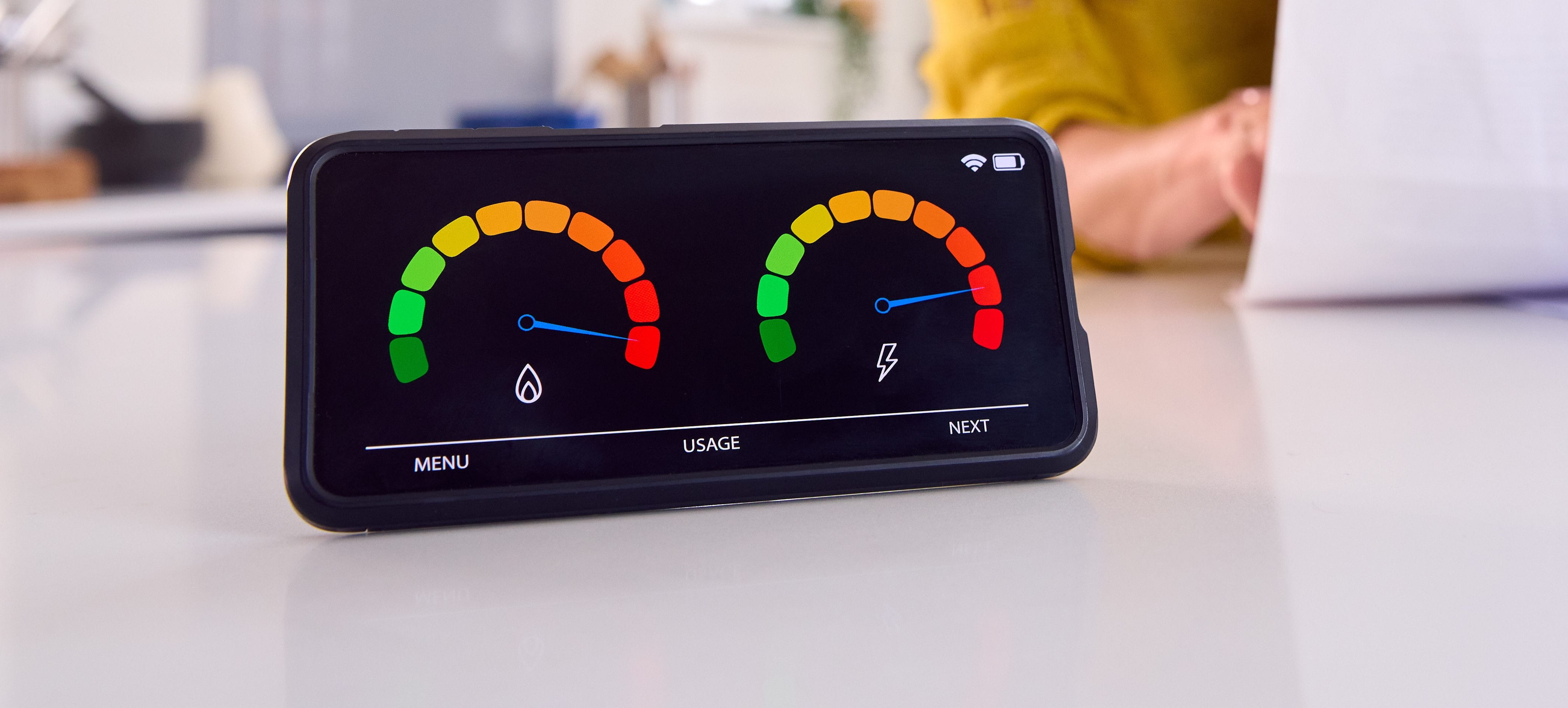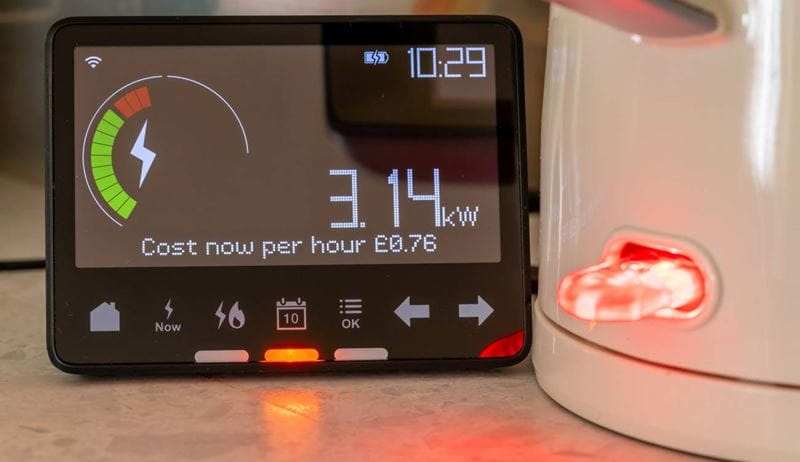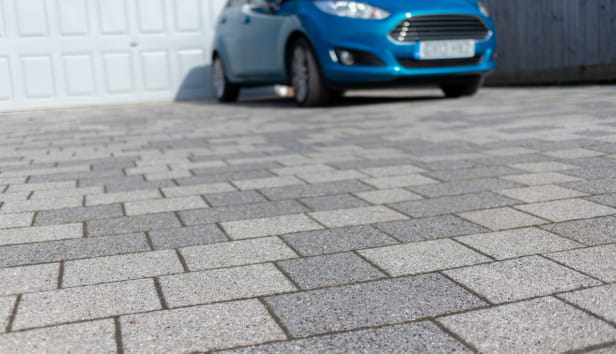
Smart meters can help you save money and save you the hassle of taking meter readings or putting up with estimated bills. Now the energy regulator has set out new rules that mean millions of people could get payouts if their meters are not working. The new proposals from Ofgem also set out maximum waiting times to get a new meter.
What’s on this page?
Ofgem has set out proposals to reduce waiting times for smart meter installations and repairs, and to offer compensation for faulty meters which aren’t fixed.
The key proposals are
There have been regular accounts over the years of smart meters not working as intended. These issues include problems sending data to energy suppliers or turning themselves ‘dumb’ without warning, leading to bills being estimated.
In future, you might be able to get £40 in compensation if you report the issue and it’s not fixed within 90 days. Ofgem has made these proposals and is now consulting on them – so you can’t claim compensation yet.
The latest government figures show that 66% of homes in Britain now have a smart or advanced meter, and more than 90% are working correctly. But that means up to 6 million may have gone ‘dumb’, meaning they are no better than a traditional meter.
Smart displays have also been prone to failure, and getting them fixed isn’t always simple, according to a survey by Which?
Energy expert Katey Bell, manager at the Centre for Sustainable Energy (CSE), says: “Sometimes smart meters do stop sending readings and if you don’t realise, you’ll be billed on estimated use. If that does happen, call your supplier and they can reboot it remotely or send an engineer. It’s rare, but it happens.”
If you’re getting a meter installed, it’s a good idea to take a meter reading yourself just beforehand, just in case of any issues. Bell says: “The biggest problem we see is when a smart meter is installed and not set to zero, so you’ll see a really obvious jump in your bill. Take a meter reading before it’s installed, then your energy company can figure out how much you’ve used.”
Smart meters are electronic devices that measure your household’s consumption of gas and electricity, sending that information back to your supplier. While you might think a smart meter is just a small display telling you what you’re spending, it’s actually made of two parts:
1. The smart meter connects directly to your gas and electricity and reads energy usage before sending it straight to your supplier.
2. A separate small screen, which can usually be placed anywhere in your house, which shows you how much your energy use is costing at that moment, as well as over a given time period. If you have a vision impairment that means seeing your in-home display is difficult, you can ask your supplier for an accessible version that’s easier to read.
If you’re happy with your current energy supply setup, you don't have to switch. Smart meters aren’t compulsory and if you are coming under pressure from your supplier to install one, you can speak to Citizens Advice.
However, if you live in England, Scotland and Wales, and your old meter is faulty or broken, it will normally be replaced by a smart meter. That’s because your supplier might not have an old-style meter in stock.
Ofgem, the energy regulator says that unless there is a good reason not to, suppliers must install a smart meter if they are replacing a meter, or installing a meter for the first time, such as in a new property.
However, if you do get a smart meter installed but don’t want to use the features, you can request that the data capabilities are switched off. This makes it ‘dumb’ – it will then function the same as a traditional meter. You will need to send readings in manually, or have your meter read every so often, in order to get accurate bills.

A simple way to start is to set your smart meter to take readings every half-hour and note what happens when you switch appliances off (for example unplug the TV, computer and electric towel rail).
After that, turn things on (for example, the dishwasher) and get a clear picture of how much it’s costing you, and where you could make savings. For example, you could check how much you save if you run the washing machine or dishwasher on a lower temperature cycle.
Or compare the cost of boiling a full kettle, compared with the amount you need. Depending on what you want to measure, you’ll need to switch between different displays on your meter to see how much your energy is costing at that moment, or to see what you’ve spent that day so far.
Bear in mind that while electricity usage should display more or less in real time, gas usage is updated every half hour, so the real-time display is slightly less useful for gas usage (this includes devices that use water heated by your gas boiler).
“It’s useful to see how much [energy] you’re using. For example, if you just want to heat one room and you’re using an electric heater, you might not realise how expensive that is. But if you look on your display you’re going to see spikes at the time you’re putting it on,” says Bell.
“What uses the most energy is heating air and water with electricity. An electric shower can use up to 10 kilowatts an hour, so cut down your shower time. A smart meter can help you build awareness on the expensive things you’re using in the home,” she adds.
Some energy suppliers have ‘time of use’ tariffs that incentivise customers to use less power at peak times, and even to use more power when there’s lots of renewable energy available. You need to have a smart meter to be on one of these. These tariffs include special electric vehicle tariffs, for people with an EV and a home charger.
If you’re interested, it’s worth taking a look at which suppliers currently offer these. If your energy supplier takes part in the National Grid’s Demand Flexibility Service, you could save by signing up to this.
It means you could get extra savings on your bill if you use less energy during certain peak times. But you can only join in if your supplier takes part. So check if your supplier is on the list and if so, ask them how you can join.
Bell says: “If you’re at home all day, you have a choice when you use your cooker or run your washing machine, so you can use energy in the off-peak hours. [This] could be coming through renewable sources such as solar power, so it’s a good way of reducing your carbon footprint too.”
Different energy suppliers offer tariffs which could suit your lifestyle, so do your research:
Are you an electric car driver? EDF offers the GoElectric Overnight tariff so you can charge it cheaply overnight. Rival E.On has Next Drive. You could pop your washing or dishwasher on overnight too.
British Gas customer? You could get half-price electricity from 11am to 4pm on Sundays with the PeakSave Sunday tariff.
Got solar panels? Octopus Energy has several money-saving tariffs.
Some people might have concerns over privacy, but there are strict rules around how your usage information is shared. Once the energy company has your data, it is only able to share it with network operators on an anonymous basis, unless you give your express permission to do otherwise.
“Your data isn’t shared once it goes to the energy supplier and it’s not like it can figure out what people are doing at any one time,” says Bell. “If you have a smart meter, your energy company will know how much energy you’re using, but not what you’re doing with it.”
Your energy consumption data can also be accessed by the Government – which it says is to monitor the Energy Price Guarantee scheme – after it updated its privacy framework in August 2023.
Many people were alarmed to find they couldn’t switch energy suppliers if they had a first generation (SMETS1) smart meter. But the good news is the SMETS2, introduced in 2019, has the functionality to do so.
“First generation smart meters were really difficult to use because with most of them it was impossible to switch suppliers – and if you did, it would stop acting like a smart meter and would be difficult to replace, so it was a frustrating system,” says Bell. “But now they can be replaced, so most people now have a SMETS2 and with that you can easily transfer over to a different supplier.”
If you are on the older generation smart meter, they can be upgraded remotely to function in the same way as the newer models, but it’s important to keep an eye on them if this happens – some users have reported erratic behaviour that their energy supplier had to be contacted to fix.
There is a Government plan in place to move over all SMETS1 meters to the new network used by SMETS2, but it’s not clear when this will happen. If your older meter can’t be ‘found’, then a new meter will need to be installed manually.
If you’re on a pre-paid meter, that’s no barrier to going smart. “You can see your usage in the same way you would with a credit meter. It makes it easier to track what you’ve spent and top up on your phone,” says Bell.
Energy suppliers must follow rules and check you’re not vulnerable before they swap you on to a pre-payment meter, and it can only be installed if it’s safe and you can easily access and use it.
You can also set your pre-paid meter to top up automatically when it reaches a certain level to make sure you’re not left in the dark. The in-home display shows you how much credit you have left to help you budget in real time.
If you need to change between pre-pay and credit your supplier can swap you over without the need for a new smart meter. And, like initial smart meter installation, there's no charge – and energy prices shouldn’t be more expensive.
If you’re thinking of getting a smart meter, contact your energy supplier to find out about installation – it shouldn’t cost anything, but will depend on availability in your area as to when you can make the switch.
If you’re struggling to pay your bills, contact your energy supplier or Citizens Advice has a helpful page of useful information and a consumer helpline to talk to an energy advisor on 0808 223 1133.
MoneySavingExpert also has a comprehensive list of places you can contact to see if there’s any help available too.
Don’t forget to check which benefits you’re eligible for – some people can get support with heating bills.



Could you be making extra cash from your parking space?

From 2028, electric car drivers will pay a new road charge. Find out how it works and if EVs still save you money.

